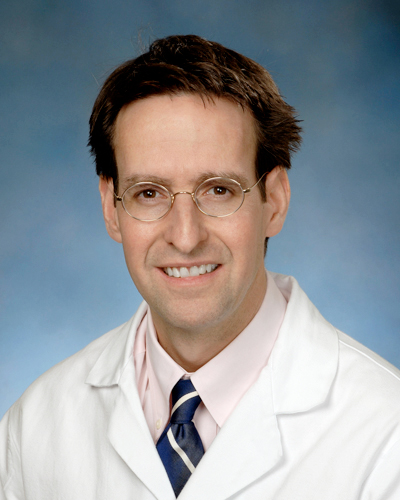The Risks of Delaying Mitral Valve Surgery
Patients who receive early heart surgery to correct mitral valve problems survive at the same rate as patients without heart disease. However, a new study has found that many patients are referred for surgery too late, after they have already suffered heart or lung damage. The major contributor to surgical delays, the researchers say, might be lack of awareness and education on the part of doctors about alternatives to open-heart surgery.

James S. Gammie, MD
The study, led by James S. Gammie, MD, professor of surgery at the University of Maryland School of Medicine (UMSOM) and chief of cardiac surgery at the University of Maryland Medical Center, found patients referred for mitral valve (MV) surgery often had heart failure, impaired ability to pump blood, and heart rhythm abnormalities, conditions that might compromise long-term survival.
“The key challenge in mitral valve surgery is timing — correcting the problem before permanent damage occurs,” Gammie says. “Our study shows there’s a substantial opportunity to increase long-term survival of patients with mitral valve disease by following established guidelines and encouraging earlier referral for operation.”
Several factors may account for delayed MV surgery, including the severity of symptoms. “Mitral valve symptoms often progress slowly over four or five years,” Gammie says, while symptoms related to the aortic valve, also in the heart, often occur rapidly, drawing attention.
Gammie also speculates that some patients with mitral disease have not been considered surgical candidates. “My prediction is that the availability of less-invasive therapy will raise awareness and will encourage referral of patients in the future that are at present deemed to be too risky for conventional surgery by their cardiologists and primary care physicians,” Gammie says.
Rachael W. Quinn, PhD, manager of the UMSOM Valvular Heart Disease Research and Innovation Laboratory, distilled information from an enormous data trove to form the analysis. “It was surprising to see that we’re still working on ways to get patients in to see their doctors and get the proper referrals to treatment,” says Quinn, the paper’s senior author. “The study helps us see the current state of mitral valve surgery and how it’s changing. We can use the information to help shape the direction of mitral valve surgery in the future.”
The mitral valve — one of four valves in the heart — prevents blood from flowing backward into the left atrium and lungs. Mitral valve diseases can cause shortness of breath, fluid retention, fatigue, and lightheadedness. MV surgery can reduce symptoms of heart failure, prevent or reverse unhealthy changes in the size, shape, structure or function of the heart, and decrease death rates among people with severe mitral disease.
The study, published in The Annals of Thoracic Surgery, analyzed the Society of Thoracic Surgeons Adult Cardiac Surgery Database, a repository for more than 6 million surgical records, encompassing data from adult cardiac surgery centers across the country and throughout North America. The researchers identified more than 87,000 patients at 1,125 centers in North America who had undergone primary MV operations from July 2011 to September 2016. The average age of patients in this group was 64, and half were female.
MV surgery is the fastest-growing surgical intervention in the database, according to the analysis, with the volume of isolated MV operations up 24 percent during the study period and a subset of MV operations for degenerative leaflet prolapse up 44 percent. Conventional MV surgery is very safe, with a low risk of death or complications.
During the period under study, about three-quarters of patients underwent a conventional breastbone-splitting procedure, whereas 23 percent had less-invasive procedures.
“This study provides a critical snapshot of conventional, open-heart, on-heart bypass mitral valve surgery in the United States today,” says E. Albert Reece, MD, PhD, MBA, executive vice president for medical affairs at the University of Maryland, Baltimore, the John Z. and Akiko K. Bowers Distinguished Professor, and dean of UMSOM. “It will help both scientists and clinicians and will serve as a benchmark for comparison with newer, less-invasive therapies as they are more widely adopted.”
Funding for this analysis was provided by the Society of Thoracic Surgeons through the access and publications committee as well as through divisional funding at UMSOM.
Publication
Gammie JS, Chikwe J, Badhwar V, Thibault DP, Vemulapalli S, Thourani VH, Gillinov M, Adams DH, Rankin JS, Ghoreishi M, Wang A, Ailawadi G, Jacobs JP, Suri RM, Bolling SF, Foster NW, Quinn RW. “Isolated Mitral Valve Surgery: The Society of Thoracic Surgeons Adult Cardiac Surgery Database Analysis.” Annals of Thoracic Surgery https://doi.org/10.1016/j.athoracsur.2018.03.086



